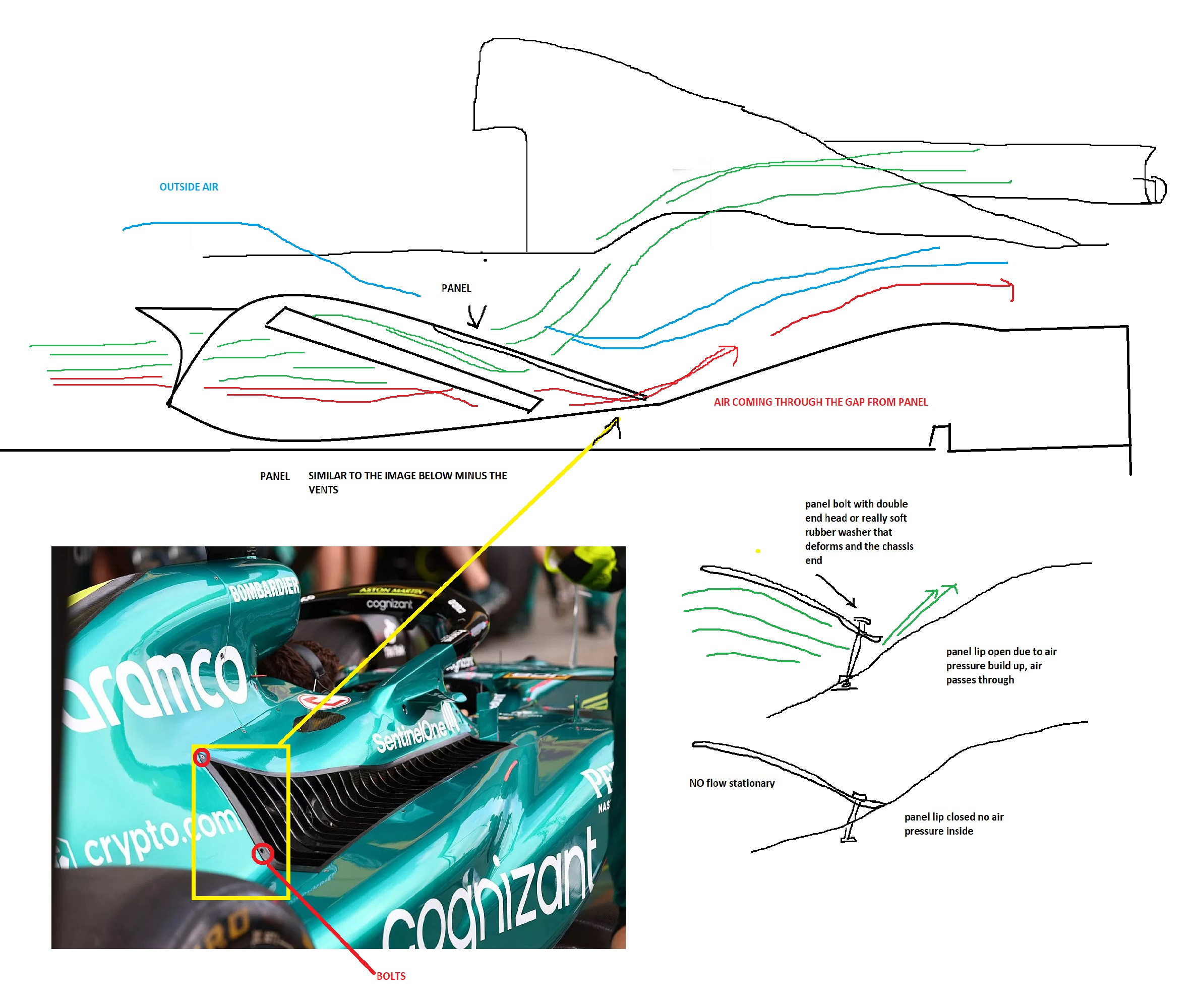F1NAC wrote: ↑18 Feb 2023, 18:55
Won’t that generate more sidepod lift than usual shape? I don’t see gills which could energize flow and reduce lift?
If a Gill doesn't pass through a rad, it will energize a bit otherwise it will feed only low energy air in the boundary layer which would hurt more. Also any wing or Gill that energizes the flow will result in higher lift.
In this case the extreme drop will create higher lift than other side pods, not just at the curvature but also on top of the shoulder, where air is pulled in from the side. BUT at the intersection with the floor there is a huge trough. This would also result in a stronger high pressure area than other teams intersections.
I was just wondering why they might have done so given that alpine and Williams are doing the same thing but with a much less aggressive and less 'risky' ramp. And I think it comes down to how much they want to bend the flow laterally really sharply. Just using cfd eyes if you were to bend the flow with the depth of alpine or Williams water slides, the flow may spillover the shoulder since its coming down a ramp, and you're trying to bend a rather large mass flow.
In AMRs case they are getting the flow in a pocket where the side wall height is sufficient before attempting to push it inwards.

